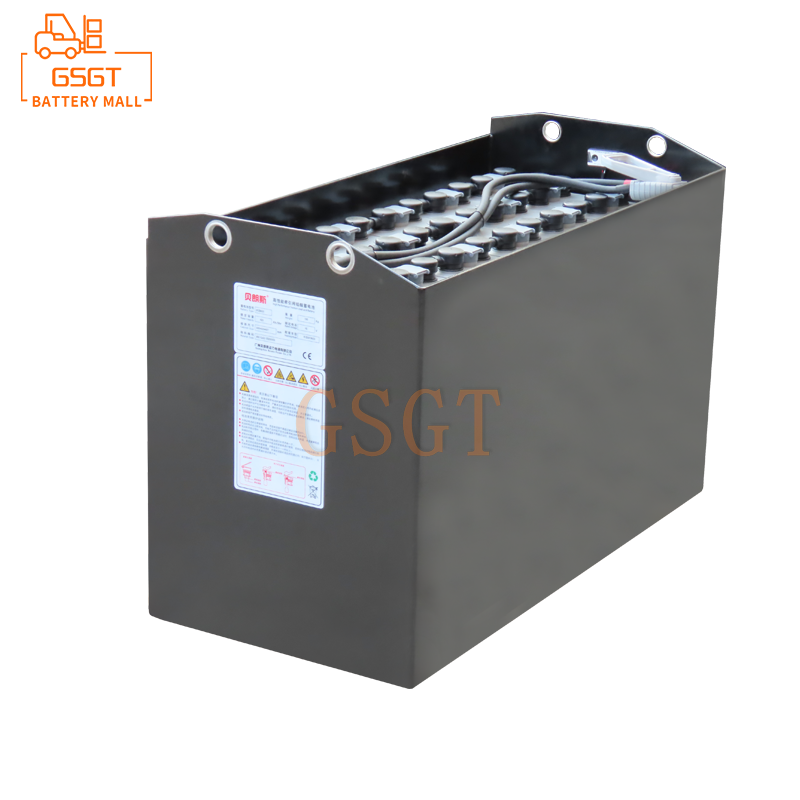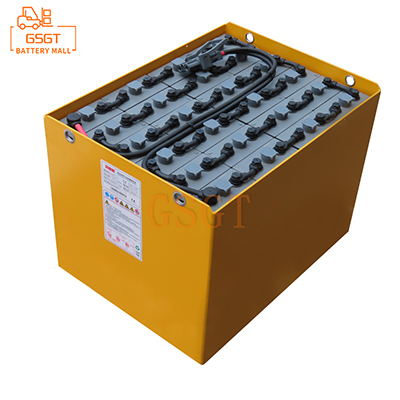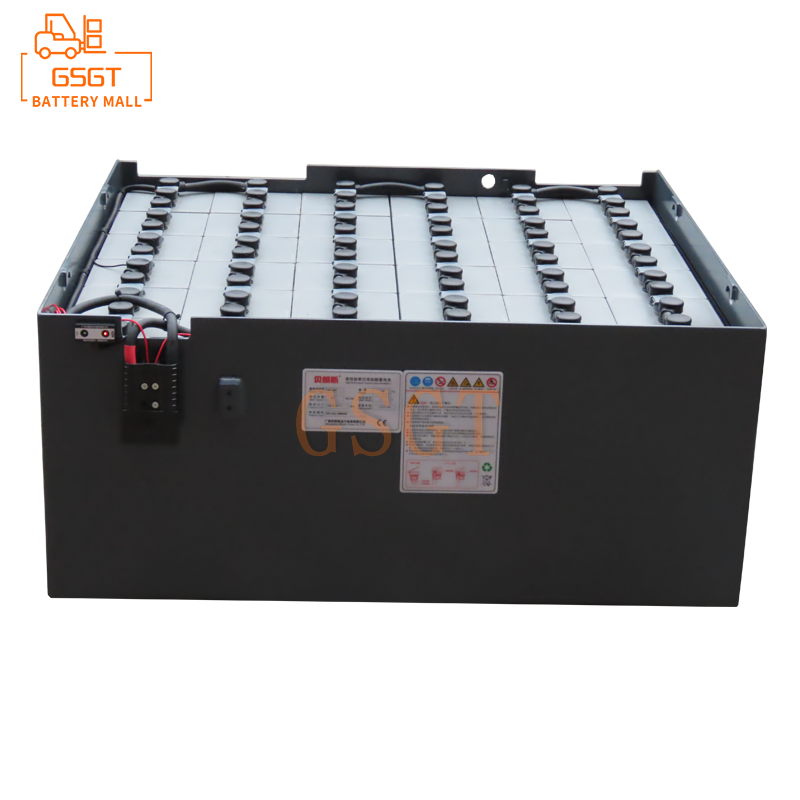Time:2025-04-10 09:45:10
Browse:588
In the field of industrial logistics, forklifts, as a key equipment for material handling, widely rely on lead-acid batteries to provide power support. However, in the long-term use of lead-acid batteries, capacity attenuation is inevitable, which not only affects the work efficiency of forklifts, but also increases operating costs. It is very important to analyze the causes of capacity attenuation and explore effective countermeasures to ensure the efficient operation of forklift trucks and reduce the operating burden of enterprises.
1. The reason for the attenuation of lead-acid battery capacity
(1) Plate vulcanization
1. ** Principle ** : When the lead-acid battery is undercharged for a long time or the electrolyte level is too low, the lead sulfate on the plate cannot be completely converted into lead dioxide and spongy lead, which will gradually form a coarse and difficult to dissolve lead sulfate crystal, which is plate vulcanization. These sulfides adhere to the surface of the plate, preventing the full contact between the electrolyte and the plate, greatly reducing the chemical reaction activity of the battery, which leads to capacity attenuation.
2. ** Influencing factors ** : forklift working environment is complex, if the charging time is not reasonable, frequent short time after the use of sufficient electricity, long-term accumulation is easy to lead to plate vulcanization. In addition, the electrolyte density is too high, the ambient temperature is too low, will also accelerate the vulcanization process.
(2) Water loss
1. ** Process ** : During the charging and discharging process of the lead-acid battery, electrolytic water reaction will occur, producing hydrogen and oxygen escape. Especially in the case of overcharge, the gassing reaction is intensified, resulting in a continuous reduction of water in the electrolyte. At the same time, if the forklift use environment is not well ventilated and heat dissipation, the battery temperature increases, and the water evaporation speed will be accelerated.
2. ** Hazard ** : Water loss causes the electrolyte concentration to rise, aggravates plate corrosion, will also cause the battery internal resistance to increase, reduce the battery charge and discharge efficiency, and the capacity will gradually decline.
(3) Plate corrosion
1. ** Chemical reaction ** : Lead dioxide, the main component of the positive plate, will undergo a series of chemical reactions with sulfuric acid in the acidic electrolyte, and with the increase of the number of charge and discharge cycles, the active substance on the plate gradually falls off, resulting in a decrease in the effective area of the plate. The spongiform lead of the negative plate is oxidized to lead sulfate during charging and reduced to lead during discharge, and the plate will also be corroded to a certain extent during this process.
2. ** Acceleration factor ** : too high charging voltage, high current charge and discharge and excessive impurity content in the electrolyte will accelerate plate corrosion and promote faster capacity decay.
(4) Self-discharge
1. ** Phenomenon ** : Even if the forklift lead-acid battery is in a static state, some spontaneous chemical reactions will occur inside, resulting in slow loss of electricity, which is self-discharge. Self-discharge is mainly due to the impure battery materials, such as the plate and the electrolyte containing other metal impurities, forming a micro-battery inside the battery and triggering self-discharge.
2. ** Consequences ** : Long-term self-discharge will cause the battery to be in a state of loss, further aggravating problems such as plate vulcanization, and the capacity continues to decrease under the vicious cycle.
2. Coping strategies
(1) Optimize charge management
1. ** Intelligent charging equipment ** : The introduction of intelligent charging machine with adaptive function, it can dynamically adjust the charging voltage and current according to the real-time status of the battery. At the initial stage of charging, the battery is quickly supplemented with a large current, and when it is close to full, the current is automatically reduced to prevent overcharging, and the problem of plate vulcanization and water loss is effectively reduced. For example, some advanced intelligent chargers can accurately control the charging parameters according to the battery temperature and voltage change curve, increasing the charging efficiency by more than 20% while extending the battery life.
2. ** Make a reasonable charging plan ** : Make a scientific charging schedule according to the actual use of the forklift. Avoid charging the forklift battery after excessive discharge. When the power remains 20%-30%, it should be charged in time. For forklifts that are frequently used, shallow charging and shallow discharge strategies can be adopted to charge the battery for several short times to maintain the battery power in a reasonable range and reduce the risk of plate vulcanization.
(2) Regular maintenance
1. ** Check the electrolyte ** : Check the electrolyte level regularly. When the liquid level is too low, add distilled water or special supplementary liquid in time to keep the liquid level within the standard scale range. At the same time, the density meter is used to detect the electrolyte density, and the density is adjusted according to the season and the use environment to ensure the stable performance of the battery.
2. ** Clean the battery surface ** : Keep the battery surface clean and dry, prevent dust and impurities from accumulating, avoid short-circuit between the battery poles, and cause self-discharge. Wipe the battery housing and pole regularly with a damp cloth to remove dirt, and apply a protective grease such as Vaseline to the pole to prevent corrosion.
(3) Improve the use environment
1. ** Temperature control ** : To create a suitable working temperature environment for the forklift battery, air conditioning or ventilation and heat dissipation equipment can be installed in the battery storage area. When the ambient temperature is too high, strengthen ventilation and heat dissipation to reduce the battery temperature. In the cold season, measures such as thermal insulation covers can be used to maintain the battery temperature at about 25 ° C to reduce the capacity attenuation caused by temperature anomalies. Studies have shown that stabilizing the operating temperature of the battery in the range of 20-30 ° C can increase the capacity retention rate of the battery by 15%-20%.
2. ** Reduce vibration impact ** : During the driving of the forklift, the battery will be subjected to vibration and impact, and long-term accumulation may cause the active material of the plate to fall off. By optimizing the suspension system of forklift truck and installing shock pad, the vibration impact of the battery is reduced, the internal structure of the battery is protected and the capacity attenuation is delayed.
(4) Technology upgrade and replacement
1. ** The use of new additives ** : Adding an appropriate amount of nanomaterials, organic compounds and other new additives in the electrolyte can improve the internal chemical reaction of the battery, enhance the anti-vulcanization ability of the plate, and improve the battery cycle life.
2. ** Timely replacement of the battery ** : When the capacity of the lead-acid battery decays to meet the normal working needs of the forklift, and there is still no significant improvement after maintenance and technical improvement, the new battery should be resolutely replaced. Select the brand battery with reliable quality and excellent performance to ensure the stable power supply of forklift trucks and avoid affecting the production efficiency due to battery problems.
The capacity attenuation of lead-acid battery for forklift is the result of many factors. Through a series of coping strategies such as optimizing charge management, strengthening regular maintenance, improving the use environment and rational use of new technologies, the battery capacity decay can be effectively delayed, the battery life can be improved, the operating costs of forklift trucks can be reduced, and the efficient and stable operation of the industrial logistics industry can be provided with a solid guarantee. Enterprises should pay attention to the maintenance and management of lead-acid batteries, and formulate targeted programs in combination with their actual conditions to reduce costs and improve production efficiency.

$2450

$3810

$3405

$4045

MESSAGE
Professional And Efficient
Security
Affordable Price
Professional Services